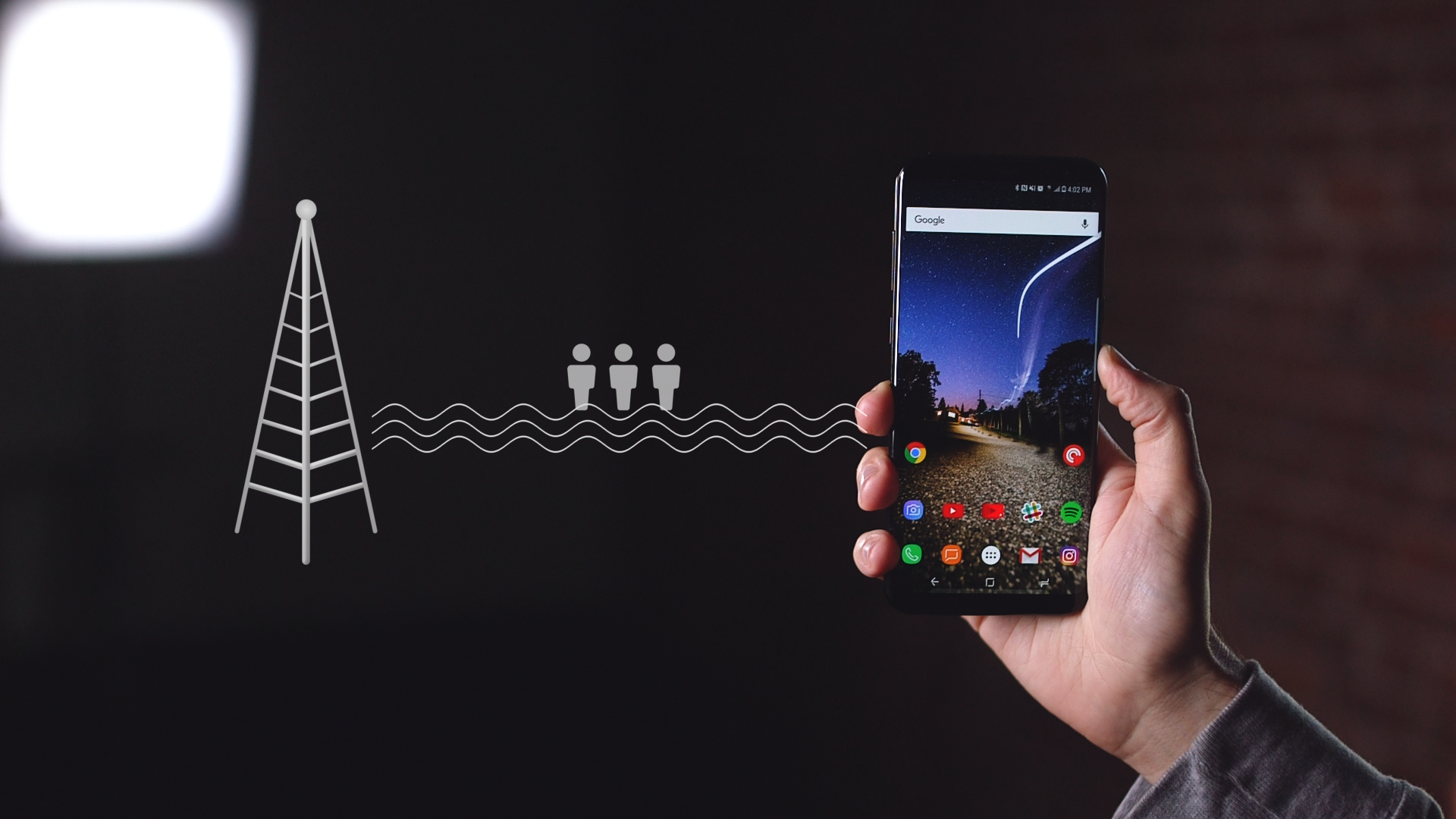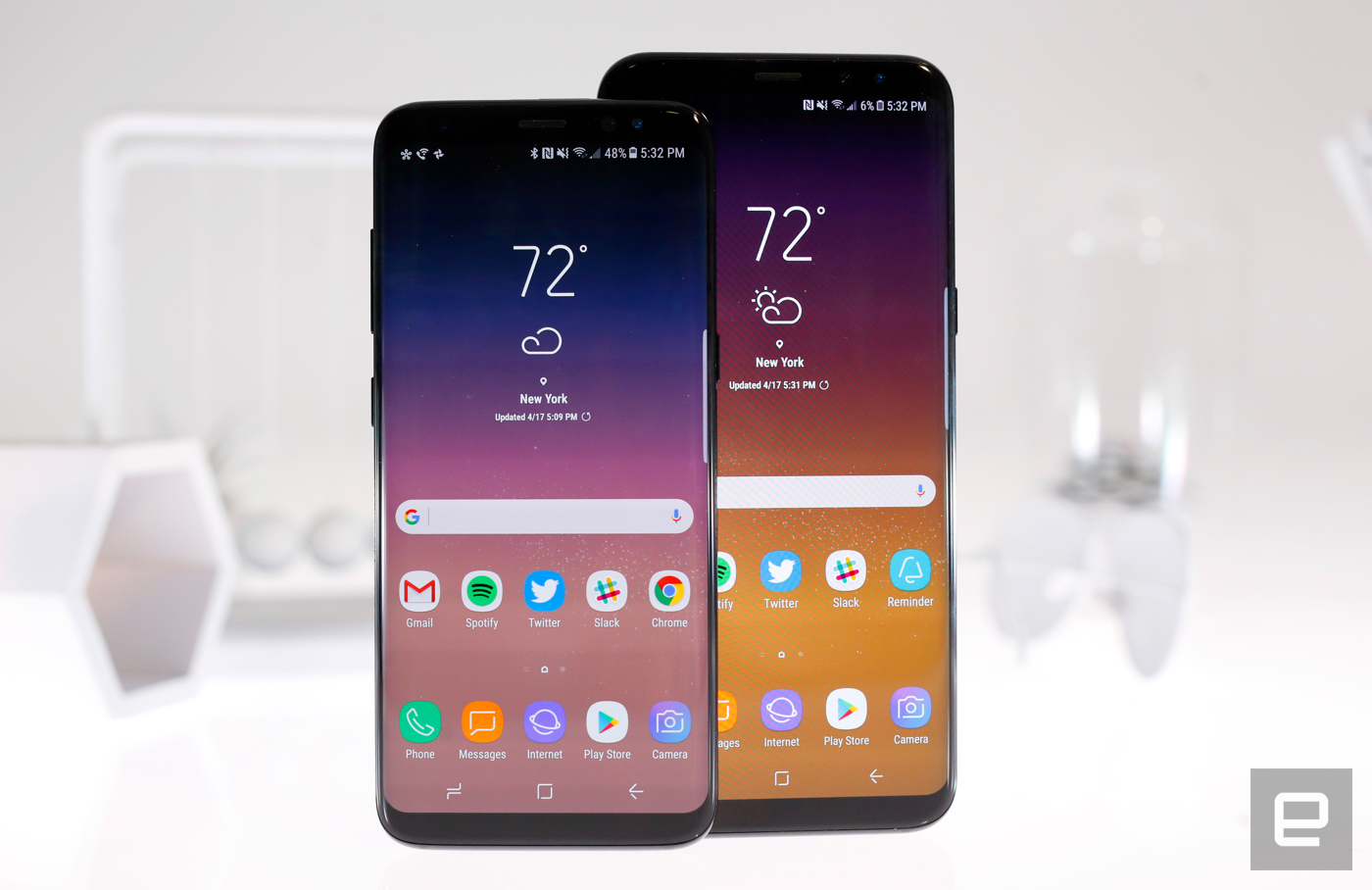You may have heard about this thing called a gigabit phone recently. The term was thrown around a lot during the launch of Samsung's Galaxy S8, since that's the first commercially available handset to support the technology. But gigabit will also be included on Sony's Xperia XZ Premium and other forthcoming high-end phones, which means you'll probably hear about it a lot more later this year. And it's going to be a big deal.
Gigabit here refers to transfer speeds of one gigabit per second -- that's 1,000 Mbps -- and it's faster even than most Americans' home internet. But before we get into how it does that, let's quickly go over how basic cellular data works.
Think of streaming a video or downloading a webpage as getting a bunch of people from a radio tower to your phone. Your network is the highway connecting your phone to cell towers, and the data, or people in this analogy, are passengers in cars. The goal is to get all those people to your phone as quickly as possible so that you don't have to sit around waiting. Plus, the sooner your cars get off the road, the more space is freed up for other people to use the highway, easing congestion.

So far, carriers have been speeding up their networks by improving the highway. One way they've been doing that is by adding more lanes, using a method called "carrier aggregation." This lets network operators use more than one spectrum band to send data to your phone, opening up more lanes to get people to you more quickly.
But there is only so much real estate to expand a highway sideways. Another way to ease congestion is to create lanes that stack on top of each other. That's done through 4x4 MIMO, which stands for Multiple Input, Multiple Output. It opens up new levels to the carrier highway by using four radios and four antenna in cell towers and your phone, respectively, creating more channels to send and receive data on the same spectrum. That's twice the number on older devices.
Despite adding lanes and stacking them, carriers still have a problem: There are just too many people using their LTE networks, and that's causing a digital traffic jam. That leaves us with speeds of up to 30 Mbps -- which is about 30 times less than the the speeds that gigabit promises. And there's really not much more networks can do to expand the highway, since radio spectrum is limited.

So, the latest technology looks at the vehicles themselves, and this is what makes mobile gigabit possible. It's called 256 QAM (pronounced "kw-aw-m"), which stands for Quadrature Amplitude Modulation, and it squeezes about three times more people into each car, while maintaining the same access to all four levels of the highway. That's like replacing regular cars with clown cars: More passengers can get where they're going without increasing traffic.
In fact, this could even reduce traffic. If more 256 QAM devices replace existing handsets, it will mean fewer, but more spacious cars on the roads. This is good news for those who still use regular cars on the highway, since there will be fewer vehicles on the road.
These three methods -- aggregation to open more lanes, 4x4MIMO to stack them and 256QAM to squeeze more passengers into cars -- combine to let networks achieve speeds of up to 1 Gbps in simulations and controlled environments. In the real world, though, speeds are expected to be closer to between 100 and 300 Mbps. That's a little disappointing, but still better than most Americans' home Internet.

In addition to the Galaxy S8, ZTE already demonstrated its gigabit-capable phone at MWC this year. That's because those devices use a Snapdragon 835 CPU, which supports 4x4 MIMO and 256QAM. You'll only be able to experience gigabit if you use a compatible phone, and Qualcomm expects about eight of these fancy new handsets to launch this year. Even if you buy a Galaxy S8 today, though, you'll have to wait till your service provider rolls out the infrastructure to support it.
The good news is: You won't have to wait too long. T-Mobile, Sprint, Verizon and AT&T already said they would roll out gigabit by the end of the year. Speaking of carriers upgrading their networks, by the way, do not confuse gigabit with 5G. That's a whole other set of standards with even more confusing terminology that deserves another explainer unto itself. For now, though, suffice to say that gigabit is coming soon, and it looks to be worth the wait.
Verizon owns Engadget's parent company, AOL. Rest assured, Verizon has no control over our coverage. Engadget remains editorially independent.